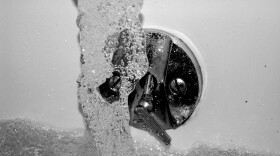Today marks the second anniversary of Flint’s ill-fated switch to the Flint River for the city’s drinking water source.
The river water was not properly treated with anti-corrosive chemicals, and the highly corrosive river water damaged pipes and fixtures, which continue to leach lead into the city’s drinking water.
The latest tests show slight improvement in Flint’s lead levels, though still not enough to comply with federal rules.
State officials have conducted five rounds of lead testing from so-called ‘sentinel sites’ around Flint. The percentage of homes testing above the federal action level for lead has declined with each round.
But Flint is not yet in compliance with federal drinking water standards. For now, the state is done with its sentinel site testing.
Next month, federal, state and local officials want Flint residents to flush their pipes.
(The Environment Report's Rebecca Williams has more about that effort here.)
After the flushing effort in Flint, expect more testing. A governor’s spokesman says those future tests may take a different form from the sentinel program.
Officials are busy monitoring the water for signs of lead, Legionella, and other documented problems.
But Scott Smith with the group Water Defense says the testing should expand to look for contaminates that Flint residents may be exposed to taking a bath or a shower.
“You can’t find what you don’t look for,” says Smith, “And if you’re not testing water the way humans encounter water, with hot or warm water, you’re not going to find it.”
Smith will talk about his concerns with the Flint city council this evening.










